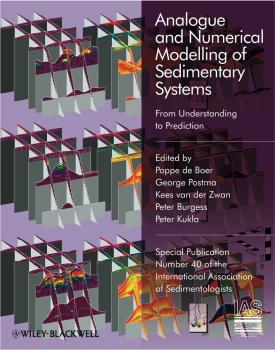Peter Burgess
Список книг автора Peter BurgessDiseases of Carp and Other Cyprinid Fishes
Cyprinids rank as one of the most commercially important groups of freshwater fishes and are exploited for many purposes; as a human food source, especially in Europe and Asia; as sport fish; and as ornamental fish for ponds and aquaria. Certain species are also cultured as bait fish and several of the small cyprinids such as the zebra fish have become internationally accepted laboratory models for toxicology testing and molecular research. A thorough understanding of cyprinid health and diseases is fundamental to the successful management and exploitation of these fishes for freshwater fisheries, pisciculture and ornamental productions. This practical guide to disease diagnosis, prevention and control includes numerous colour plates and covers a comprehensive array of diseases – infectious and non-infectious – of cultivated and wild cyprinids.
Analogue and Numerical Modelling of Sedimentary Systems. From Understanding to Prediction (Special Publication 40 of the IAS)
Understanding basin-fill evolution and the origin of stratal architectures has traditionally been based on studies of outcrops, well and seismic data, studies of and inferences on qualitative geological processes, and to a lesser extent based on quantitative observations of modern and ancient sedimentary environments. Insight gained on the basis of these studies can increasingly be tested and extended through the application of numerical and analogue forward models. Present-day stratigraphic forward modelling follows two principle lines: 1) the deterministic process-based approach, ideally with resolution of the fundamental equations of fluid and sediment motion at all scales, and 2) the stochastic approach. The process-based approach leads to improved understanding of the dynamics (physics) of the system, increasing our predictive power of how systems evolve under various forcing conditions unless the system is highly non-linear and hence difficult or perhaps even impossible to predict. The stochastic approach is more direct, relatively simple, and useful for study of more complicated or less-well understood systems. Process-based models, more than stochastic ones, are directly limited by the diversity of temporal and spatial scales and the very incomplete knowledge of how processes operate and interact on the various scales. The papers included in this book demonstrate how cross-fertilization between traditional field studies and analogue and numerical forward modelling expands our understanding of Earth-surface systems.

